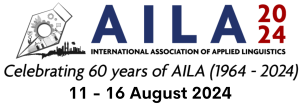“Selamat Datang”
– Malaysian way of greeting “Welcome”!
For over 600 years, Malaysia has welcomed visitors from around the world, thanks to its location at the centre of the major trading routes between Asia, the Middle East and the West. Along with the visitors, Malaysia has also welcomed their different customs and cultures, making its population a microcosm of Asian cultures with a rich multicultural mix of Malay, Chinese, Indian and indigenous population. This has created a melting pot of customs, cuisines, languages, lifestyles and cultures. This explains why English is widely spoken here with Malay as the national and official language and why most Malaysians are multilingual. Malaysia’s bustling economy is at the heart of the world’s largest economic growth region. The nation is a key player within ASEAN and the South East Asia region, which has a population of over 600 million. Along with the neighbouring giants of India and China, the Asia region constitutes over 45% of the world’s population. Malaysia comprises 11 states making up Peninsular Malaysia, bordered by Thailand to the North and Singapore to the South, and the states of Sabah and Sarawak, that make up East Malaysia. This makes Malaysia geographically diverse as well, from white, sandy beaches, to lush tropical rainforests rich in flora and fauna to cool, crisp highlands, including Mount Kinabalu the tallest mountain in South East Asia.
Malaysia is a multicultural society, with Malays, Chinese and Indians living side by side. They are mostly Muslims, but there are Christians and Hindus amongst them. The Malays speak Bahasa. The Chinese comprise about a third of the population. They are Buddhists and Taoists, speak Hokkien, Hakka and Cantonese. Indians account for about 10% of the population. They are mainly Hindu Tamils from southern India, they speak Tamil, Malayalam, and some Hindi, and live mainly in the larger towns on the west coast of the peninsula. There is also a sizeable Sikh community. Eurasians and indigenous tribes make up the remaining population. Despite Bahasa Malaysia being the official language, when the four members of these different communities talk to each other, they generally speak English, which was recently reinstated as the language of instruction in higher education.
The main indigenous population is the Iban of Sarawak, who number 395,000. They are largely longhouse dwellers and live along the Rejang and Baram rivers. The Bidayuh (107,000) are concentrated on Sarawak’s Skrang River. The Orang Asli (80,000) live in small scattered groups in Peninsular Malaysia. Traditionally nomadic agriculturalists, many have been absorbed into modern Malaysia.


